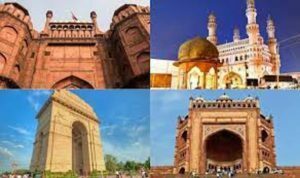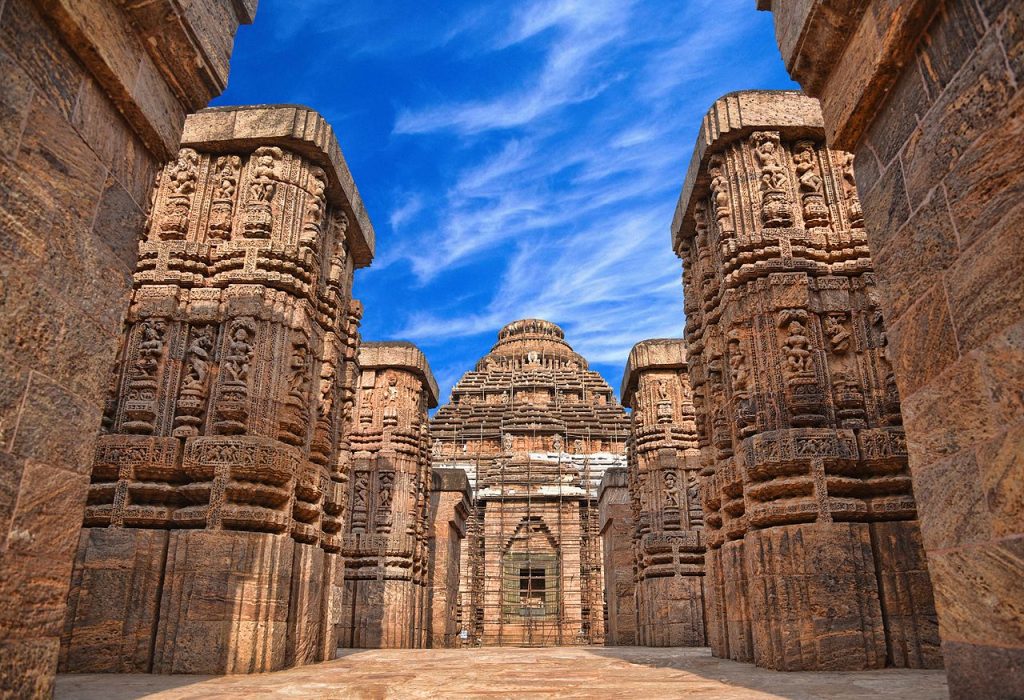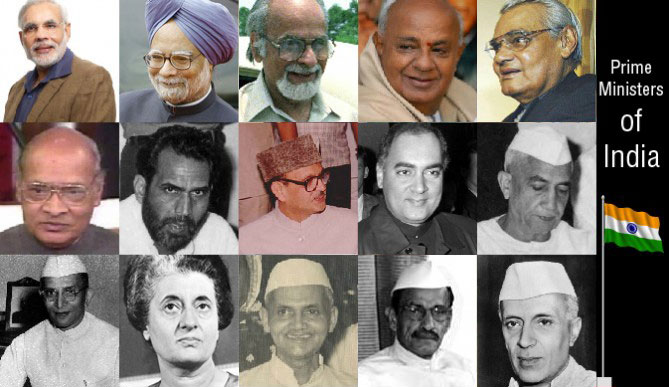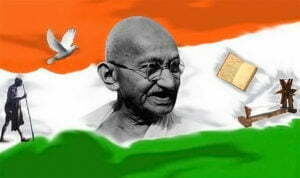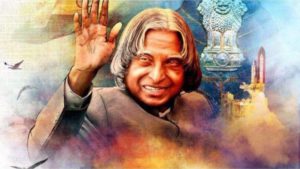The Indian Mutiny, also known as the Sepoy Mutiny or the First Indian War of Independence, was an expansive but ultimately failed insurrection against British authority in India from 1857 to 1859. It began in Meerut with Indian troops (sepoys) serving for the British East India Company and extended to Delhi, Agra, Kanpur, as well as Lucknow. In India, it is commonly referred to as the First War of Independence as well as the Revolt of 1857.
In this article, we will look at the causes, spread, and finally, the reasons for the failure of the Revolt of 1857.

The Causes of the Revolt of 1857
Numerous reasons, including social-religious, political, as well as economic, combined, led to the beginning of the revolt.
Social and Religious Causes
The British had abandoned their policy of non-interference in Indian socio-religious life. This was the primary social and religious cause of the First Indian War of Independence.
Several Indians were dissatisfied with the Company’s efforts to enforce westernization without consideration for historical nuances of the Indian society. In addition, the British made legislative modifications, followed by limitations on Indian religious rituals, which Indians perceived as steps towards forced conversion to Christianity.

To further their religious propaganda, the EIC administration invited Christian missionaries to Bombay and Calcutta under the Charter Act of 1813. Lord Dalhousie, the British Governor-General of India from 1848 to 1856, enacted the Widow Remarriage Act of 1856, which permitted widows, like Christian women, to remarry. He also issued orders that allowed Hindus who converted to Christianity to inherit property, which the local custom previously prohibited.
Economic Causes
British rule resulted in the breakdown of village self-sufficiency as well as the commercialization of agriculture, which burdened the commoners. Additionally, the adoption of free trade imperialism beginning in 1800, de-industrialization, and wealth drain, all of which contributed to the overall decline of the economy.
Many Indians also believed that the firm was requesting a high levy from the residents. This included an increase in land taxation, which led to the rapid spread of the rebellion. Furthermore, tax-free land resumption and jagir seizure caused discontent among the jagirdars and zamindars.
These reforms sowed widespread dissatisfaction not just among the landed nobility, but also among a considerable portion of the middle-class population.
Military Complaints

The spread of British dominion in India had harmed the Sepoys’ service conditions. In fact, the British forced them to serve in a location far from their homes without compensation in the form of more Bhatta (extra pay). In addition, the General Service Enlistment Act of 1856, which forced sepoys to traverse the oceans whenever necessary, was a major source of military discontent. The Post Office Act of 1854 further added to the unrest as it abolished free postage for soldiers.
Prior to the British administration, any refusal to continue on duty until pay concerns were remedied was regarded as an acceptable means of expressing dissatisfaction by Indian troops serving under Indian monarchs. The sepoys believed such tactics to be an acceptable negotiation strategy, and they repeated them whenever such difficulties occurred. However, unlike their Indian forefathers, the British deemed such refusals to be blatant “mutinies,” and hence forcibly crushed them.
All these events led to the beginning of the Revolt of 1857 as a Sepoy Mutiny.
For more information about how military causes influenced the revolt of 1857, you may watch the video below.
Political Causes
The policy of Doctrine of Lapse was the primary political reason for the great Revolt of 1857. It was an annexation strategy supposedly adopted by Lord Dalhousie, according to which any princely state or area under the British East India Company (EIC) would be taken immediately if the sovereign died without a male heir.
Spread of the Revolt of 1857
The sepoy revolt extended from Barrackpore to Meerut and eventually to Delhi. Both at Meerut and in Delhi, sepoys slaughtered Europeans wherever they encountered them. When word of the sepoys’ takeover of Delhi reached Muzaffarnagar, the sepoys of the region began a revolt as well. Soon, Punjab, Naushera, Hatmardan, and other provinces also joined the insurrection.
The sepoys broke into the jails and robbed the treasuries in the majority of these locations. In addition, the Taluqdars of Oudh, who had been evicted from their lands following the capture of Oudh in 1856, joined the insurrection. As a result, the revolution extended throughout Oudh and took on the characteristics of a national revolt. Many civilians also joined forces with the sepoys.
Let’s look at a few facts about how the revolt proceeded in each city:
Delhi
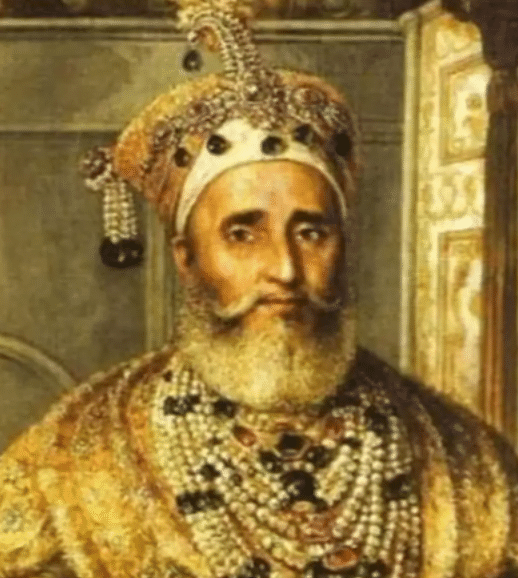
- The apparent and symbolic leadership in Delhi belonged to Emperor Bahadur Shah, but the true authority was in the hands of a Court of Soldiers commanded by General Bakht Khan, who had led the mutiny of the Bareilly army and brought them to Delhi. Bakht Khan was a regular subedar of artillery in the British army. He represented the popular as well as the plebian element at the Revolt’s headquarters.
- Following the British capture of Delhi in September 1857, Bakht Khan relocated to Lucknow and continued to resist the British until his death in a battle on May 13, 1859.
- Emperor Bahadur Shah was possibly the weakest link in the Revolt’s command chain.
Kanpur
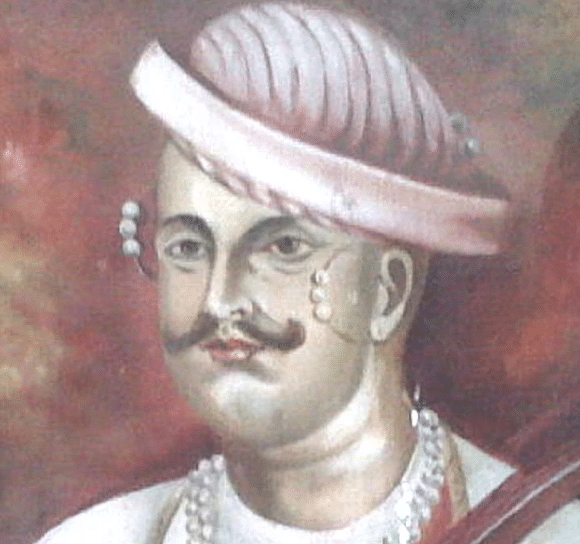
- Nana Sahib, the adopted son of Baji Rao II, the last Peshwa, launched the Kanpur Revolt. Here, with the aid of the sepoys, he drove the English out of Kanpur and declared himself Peshwa. Simultaneously, Nana Sahib recognized Bahadur Shah as the Emperor of India and announced himself to be his Governor.
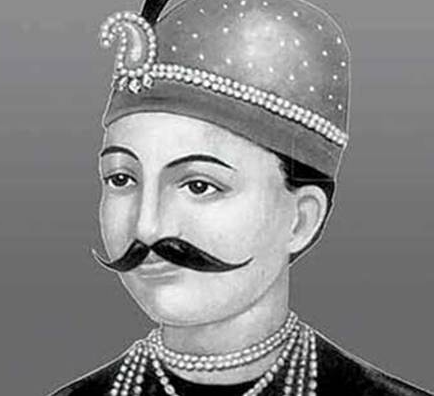
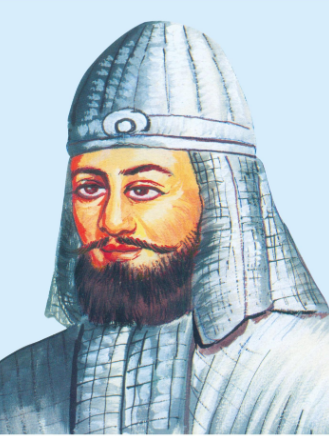
- Tantia Tope, one of Nana Sahib’s most devoted subordinates, bore the brunt of the fighting on his behalf. Another of Nana Sahib’s devoted servants, Azimullah, specialized in political propaganda. Unfortunately, Nana Sahib tainted his (Azimullah’s) bravery record by deceiving the garrison at Kanpur despite agreeing to give them safe conduct.
Lucknow
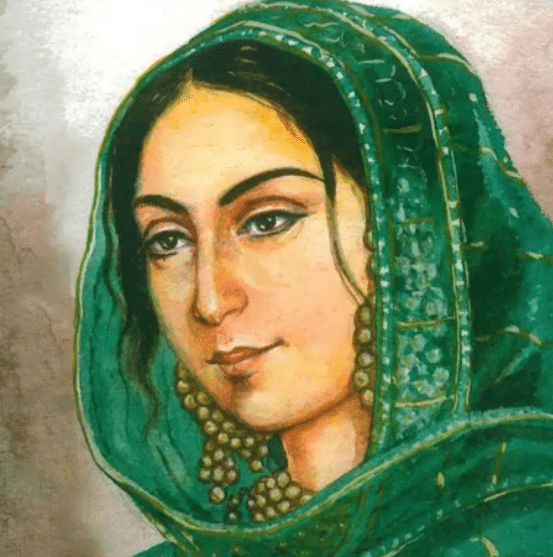
- The Begum of Avadh, who had declared her infant son, Birjis Kadr, as Nawab of Avadh, led the insurrection in Lucknow.
Jhansi
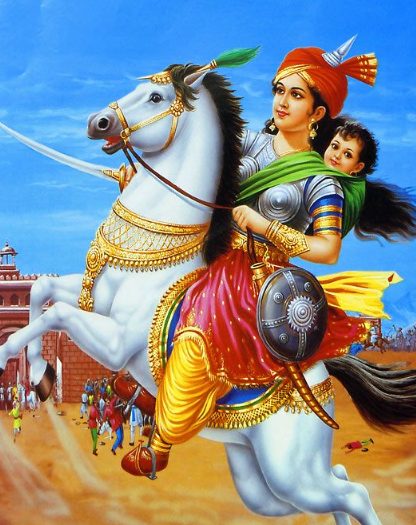
- The youthful Rani Lakshmibai of Jhansi was one of the main leaders of the Indian Rebellion of 1857 and probably one of the greatest heroines in Indian history. When the British refused to recognize her right to adopt an heir to the Jhansi gaddi (throne), conquered her realm, and threatened to punish her as an agitator of the sepoy revolt in Jhansi, the young Rani joined the insurgents. She took Gwalior with the assistance of Tantia Tope as well as her faithful Afghan guards.
- Maharaja Sindhia, who was loyal to the British, attempted to battle the Rani but was defeated.
- Rani Lakshmibai died bravely fighting on 17 June 1858.
Arrah (Bihar)
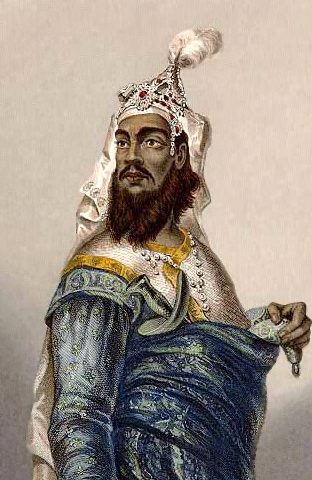
- Kunwar Singh, a bankrupt as well as disgruntled zamindar of Jagdishpur near Arrah, was the principal organizer of the Bihar Revolt. Although almost 80 years old, Kunwar Singh was possibly the most accomplished military leader and strategist of the Revolt. He fought against the British in Bihar before joining Nana Sahib’s army. He also campaigned in Avadh and Central India. However, his battle in Dulaur was his final one. He succumbed to the wounds he received on the battlefront on April 27, 1858, in his ancestral home in Jagdishpur.
- Another notable leader of the Revolt was Maulavi Ahmadullah of Faizabad. He emerged as one of the general Revolt’s recognized leaders in Avadh when it erupted in May. After the loss at Lucknow, Maulavi Ahmadullah headed the uprising in Rohilkhand, where the Raja of Puwain treacherously assassinated him.
Failure of the Revolt of 1857
Despite the spread of the revolt and unity of many Indians across the country, the First Indian War of Independence ultimately failed. Listed below are the several reasons why this happened:
The British Army Was Greater Then The Indian Army
For starters, the British Government’s resources significantly outweighed those of the insurgents. Fortunately for the British, the Crimean as well as Chinese wars ended by 1856, allowing the British government to focus all of its efforts on India.
A Lack of Unity
Secondly, the Indian people could not be motivated by the spirit of nationalism to resist the foreign forces for an extended length of time. Although the princes joined the revolution to reclaim their lost dignity, the taluqdars joined to reclaim their privileges, and the peasants battled for their economic unhappiness, and as a result, there was no grand goal to unite all Indians on a common platform. As a consequence, the revolt could not continue. Furthermore, the rebels were unable to form a unified military front against the British forces. Instead, they battled in different groups. Therefore, in times of necessity, they were unable to unite all of their troops, which served as a source of strength for their adversaries.
A Lack of Capable Leaders
Thirdly, the lack of capable and brilliant leaders to direct the country’s future resulted in a poor outcome of the nationwide revolution. The revolution was spontaneous, the rebels were numerous, but the commanders were not outstanding military generals.
Emperor Bahadur Shah, whom the rebels considered emperor, was elderly and frail, Nana Saheb was valiant but lacked wisdom, Tantia Tope and Kanwar Singh lacked any title to draw popular attention, but Rani Laxmi Bai was the greatest of all commanders. Despite all of her abilities as a leader and values as a devoted patriot, she found her competence restricted in directing a high-stakes military conflict. She was unable to unite all of the insurgents under her charismatic leadership. Furthermore, her death dealt a setback to the insurgents.
Inferior Weaponry
Fourthly, the rebels’ weaponry and armaments were significantly inferior to those of their English adversaries. Even though the sepoys were members of the British army, they were not permitted to use advanced weaponry, and as a result, they were inherently inferior to them. The British were able to overcome the sepoys due to these deficiencies. On the other hand, the British were fortunate to have some of the most outstanding generals and weapons in battle.
Overall, Indians were Unprepared
Finally, the revolt’s rapid emergence produced an unpredictable scenario in the country for which the people were unprepared mentally. In fact, they were completely unaware of their part in the incident. As a result, the Indian Rebellion of 1857 came to an end.
Consequences of the Revolt
Soon after the revolt ended, the British crown reformed the administrative structure and government policy.
Firstly, the British Crown took primary responsibility for the governance of the nation, and Company control was dissolved. Lord Canning declared the takeover of the Government of India by the sovereign of Great Britain at a durbar in Allahabad in the ‘Queen’s Proclamation’ published on November 1, 1858.
Secondly, the period of conquest and expansion had come to an end, and the British had vowed to uphold the dignity and rights of the indigenous kings. Thus, the Indian states were to recognize the British Crown’s supremacy and be considered as portions of a single charge from now on.
Thirdly, the Army, which was in the vanguard of the outbreak, was completely reorganized, and the concept of “division and counterpoise” began to dominate British military policy.
Finally, racial hostility and distrust between Indians and English were heightened.
Significance of the Revolt of 1857
The significance of the Indian Rebellion of 1857 can be stated in the following headings:
It Brought the East India Company to Light.
According to Sir Lepel Griffin, if there had not been a Mutiny in 1857, the numerous sorts of flaws and irregularities in the East India Company’s administrative apparatus, policies, as well as projects would not have been exposed to the World. The Great Rebellion instantly drew the attention of the British Government in London, and the major flaws, as well as deficiencies in the administration, were corrected. Additionally, the Revolt of 1857 exposed the East India Company’s military flaws, which were quickly rectified. Thus, the Revolt of 1857 was a significant event for the British.
The British Made Various Attempts to Win Over the Indians.
The governance of India was taken up directly by the Crown in Parliament following the liquidation of the East India Company. Furthermore, the people of India were promised equal legal protection, religious freedom, equal chances in government jobs, and the preservation of historic Indian rituals, customs, and usages. At the same time, the Indian princes were guaranteed that their treaties and commitments to the territorial integrity of their states, as well as their dignity, rights, and honor, would be respected. In this manner, the British Government attempted to gain the trust of the people of India for many years to come.
It Influenced India’s National Conflict
In another aspect, the Revolt of 1857 shaped the history of India’s quest for independence. It couldn’t dispute that the sepoys revolted because they had legitimate grievances. They were unquestionably justified in fighting for their rights. However, in a test of strength, the Indians’ crude equipment was no match for the British’s more advanced firearms.
The reports of the atrocities persuaded Indian intellectuals of the futility of using violence in the quest for freedom. Even during the Movement of 1857, it was clear that educated Indians had no trust in armed insurrection, and the defeat of the revolt strengthened this belief. When the leadership of India’s liberation struggle transferred to the middle class, the lessons of the 1857 Revolt affected their tactics to a considerable extent.
Final Thoughts
The Revolt of 1857 was the first war of independence in the history of British control in India. It brought together, albeit in a limited fashion, numerous segments of Indian society for a single purpose. Though the insurrection did not accomplish its intended purpose, it did sow the seeds of Indian nationalism for years to come.
FAQs
Who were the prominent leaders of the Indian Rebellion of 1857?
The following table depicts the leaders involved in the Indian Rebellion of 1857.
| Barrackpore | Mangal Pandey |
| Farrukhabad | Tufzal Hasan Khan |
| Delhi | Bahadur Shah II, General Bakht Khan |
| Delhi | Hakim Ahsanullah |
| Bihar (Jagdishpur) | Kunwar Singh, Amar Singh |
| Allahabad and Banaras | Maulvi Liyakat Ali |
| Bijnaur | Mohammad Khan |
| Lucknow | Begum Hazrat Mahal, Birjis Qadir, Ahmadullah |
| Bareilly | Khan Bahadur Khan |
| Mandsor | Firoz Shah |
| Gwalior/Kanpur | Tantia Tope |
| Kanpur | Nana Sahib, Rao Sahib, Tantia Tope, Azimullah Khan |
| Jhansi | Rani Lakshmibai |
| Muradabad | Abdul Ali Khan |
| Assam | Kandapareshwar Singh, Manirama Datta |
| Gorakhpur | Gajadhar Singh |
| Mathura | Sevi Singh, Kadam Singh |
| Orissa | Surendra Shahi, Ujjwal Shahi |
| Kullu | Raja Pratap Singh |
| Rajasthan | Jaidayal Singh as well as Hardayal Singh |
| Gorakhpur | Gajadhar Singh |
| Mathura | Sevi Singh, Kadam Singh |
Who coined the term “First War of Independence”?
Vinayak Damodar Savarkar popularised the phrase “First War of Independence” in India in his 1909 book ‘The History of the War of Indian Independence’.
What was the initial cause of the 1857 revolt?
The introduction of the ‘Enfield’ rifle instigated the rebellion. It was believed that the cartridge for this weapon was wrapped in cow as well as pig fat. Before inserting the cartridge into the pistol, the soldiers had to chew off the wrapping. As a result, both Hindu and Muslim soldiers were hesitant to use the ‘Enfield’ weapon.
Were any Indians against the Revolt of 1857?
For the first time, practically all Indians, regardless of religion, caste, creed, or profession, stood up against the British, and the nation was unified. Some, however, resisted the insurrection because they thought that the British were truly improving India. For example, the Nizams of Hyderabad, the Scndhias of Gwalior, as well as the Zamindars of Awadh are all the monarchs who actively opposed the Revolt and assisted the British in crushing it.
What is the timeline of the revolt?
| Important dates | Events |
| February 1857 | The 19th Native Infantry sepoys refused to use firearms. |
| March 1857 | After Mangal Pandey injures two British troops, the Native Infantry was dissolved. |
| April 1857 | Mangal Pandey has been executed, and troops in Meerut have refused to use greased cartridges. |
| May 1857 | Troops massacre Europeans and Christians as they approach Delhi, causing unrest in Ambala. Furthermore, in Delhi, Bahadur Shah II was declared Mughal emperor. Rebels also took control of Jhansi and handed it over to the Rani of Jhansi. |
| June 1857 | Mutinies erupted in Lucknow, Bhurtpore, as well as Rohilkhand. |
| July 1857 | There is unrest throughout the country. In the first battle of Cawnpore, Nana Sahib was defeated. In addition, Lord Canning issued the ‘Clemency’ resolution, which said that mutineers who had not been convicted of murder should not be executed. |
| September 1857 | Delhi was conquered as well as cleared of insurgents. |
| November 1857 | Kavanaugh managed to flee Lucknow. Women, as well as children, have been evacuated from Lucknow. Finally, the British leave Lucknow. |
| December 1857 | Tantia Tope was beaten in Cawnpore’s third battle. |
| April 1858 | The British captured Jhansi. |
| June 1858 | The Battle of Gwalior and the Death of Rani of Jhansi. |
| August 1858 | Queen Victoria handed up control of India to the Crown from the East India Company. |
| April 1859 | Tantia Tope was killed for treachery after being proven guilty. |
| July 1859 | Peace was declared. |
What role did Mangal Pandey play in the 1857 revolt?
The acts of Mangal Pandey in 1857 sparked the Indian Mutiny, also known as India’s First War of Independence. Mangal Pandey, a sepoy of the 34th Bengal Native Infantry (BNI), revolted against his East India Company superior officers on March 29, 1857. This incident, as well as Pandey’s subsequent punishment, fueled animosity among the sepoys of the Bengal Army, ultimately contributing to the 1857 Revolt.
How did the title of Governor-General change after the revolt?
Following the 1857 insurrection, the company rule was dissolved, and India was placed under the direct administration of the British crown. The Government of India Act of 1858 was passed, which replaced the post-Governor-General of India with the Viceroy of India. Furthermore, the British government nominated the Viceroy directly.
Share with your friends

